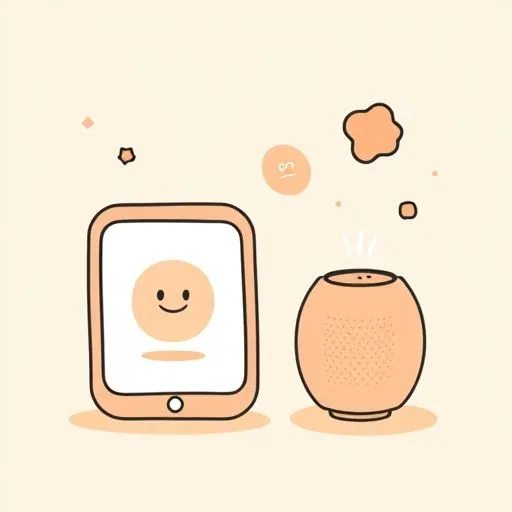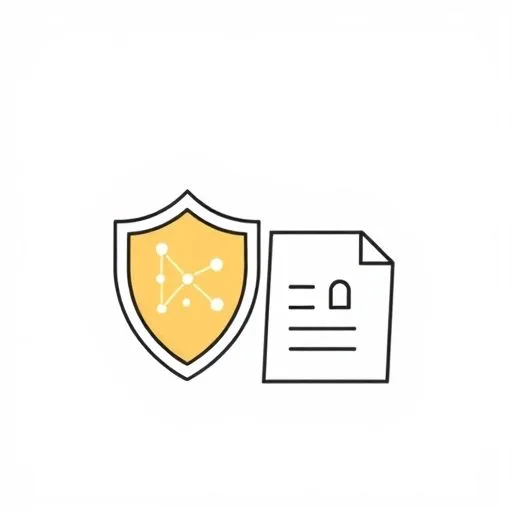
There’s something magical about watching our children discover the world through screens, isn’t there?
That sparkle in their eyes when they learn something new through an app or video call with grandparents far away.
Well, with AI popping up in almost everything our kids do, we’re all learning how to waltz between excitement and caution.
That’s why I was fascinated by efforts to make Big Tech more transparent about AI dangers – because when it comes to AI safety for kids, knowledge isn’t just power, it’s protection!
How Is AI Reshaping Our Children’s Digital Playground?

Remember when we were kids? Our playgrounds had swings and slides, maybe some monkey bars if we were lucky. Today, our children’s playgrounds include tablets, smart speakers, and AI-powered learning tools – and that’s not necessarily a bad thing!
There’s incredible wonder in watching my daughter (at that age when every sentence begins with ‘why’) interact with educational apps that adapt to her learning pace, or use voice commands to play her favorite songs. I see this as another evolution – like how our parents might have felt when television first became common in homes.
The key isn’t to resist the change, but to understand it and guide our children through it. New technologies can be fantastic tools for creativity, learning, and connection when used thoughtfully.
But just like we teach our kids to look both ways before crossing the street, we need to teach them how to navigate the digital world safely. And when considering AI safety for kids, that starts with knowing what’s out there – which brings me to something really exciting happening in California right now.
That curiosity led me to look up how governments are stepping in—so I discovered an interesting safety law brewing overseas.
Why Does AI Safety for Kids Matter More Than Ever?

Imagine if you bought a new car without knowing its safety features, or sent your child to a school without understanding its policies. That’s kind of where we’ve been with AI – powerful technology becoming more integrated into our children’s lives without full transparency about potential risks.
That’s why I was so heartened to hear about a safety law in some parts of the world. This legislation would require the largest AI companies to publish safety protocols and issue reports when something goes wrong – essentially pulling back the curtain on how these powerful systems work and what dangers they might pose.
Think of it like nutrition labels on food – knowing what’s in our children’s digital ‘diet’ helps us make better choices. When companies have to disclose how they’re managing risks like misinformation, privacy concerns, or even potential harm from biased algorithms, parents can make more informed decisions about what technology we welcome into our families.
This isn’t about stifling innovation – it’s about ensuring that as these powerful tools become more common in our children’s lives, we have the information we need to protect them while still allowing room for discovery and growth.
How Can We Teach Kids to Be Safe Digital Citizens with AI?

Let’s be real – our kids are growing up in a world very different from ours, where AI will be as commonplace as smartphones were to us. Rather than fearing this future, how can we prepare our children to thrive in it?
I believe the answer lies in teaching them to be critical thinkers and responsible digital citizens from an early age. Start by having conversations about what AI is and how it works in age-appropriate ways.
When my daughter asks why her tablet recommended a certain video, we talk about how computers learn from what we watch and how sometimes they make mistakes. Encourage creativity by showing them how AI can be a tool – like using simple drawing apps that respond to their voice, or exploring how music creation tools can help them compose their own songs.
And most importantly, teach them that technology is a tool, not a replacement for human connection. There’s nothing quite like the joy of putting devices aside and building with real blocks, running in a nearby park, or sharing a meal together – those moments are irreplaceable and form the foundation of who our children become.
By balancing screen time with rich real-world experiences, we help develop well-rounded kids who can navigate both digital and physical worlds with confidence, which is essential for AI safety for kids.
How Can Communities Work Together for AI Safety for Kids?

Parenting has never been a solo journey, and navigating the digital age is no exception. That’s why I find movements toward greater AI transparency so encouraging – they represent communities coming together to ensure technology serves humanity rather than the other way around.
As parents, we have more power than we think to shape how AI develops and integrates into our children’s lives. Stay informed about new technologies and potential risks – not out of fear, but out of preparation.
Talk with other parents about what works and what doesn’t in your families. Advocate for responsible AI development by supporting policies that prioritize safety and transparency. And remember that our voices matter – when enough of us express our concerns and preferences, companies and policymakers listen.
Our neighborhoods, whether here in Korea or back in Canada, are filled with diverse perspectives that can help create more balanced, human-centered approaches to technology.
By sharing our experiences and insights, we’re not just protecting our own children – we’re helping to create a digital future that works better for all families.
Just last week, my daughter and I sat under the maple tree in our courtyard, sketching robots with crayons—and I realized that teaching her to question what’s behind the screen is as important as the tech itself. Let’s make those moments count!
And isn’t that what community is all about? Working together to build a world where our children can explore, learn, and grow safely with proper AI safety for kids.
Source: Scott Wiener on his fight to make Big Tech disclose AI’s dangers, TechCrunch, 2025-09-23
